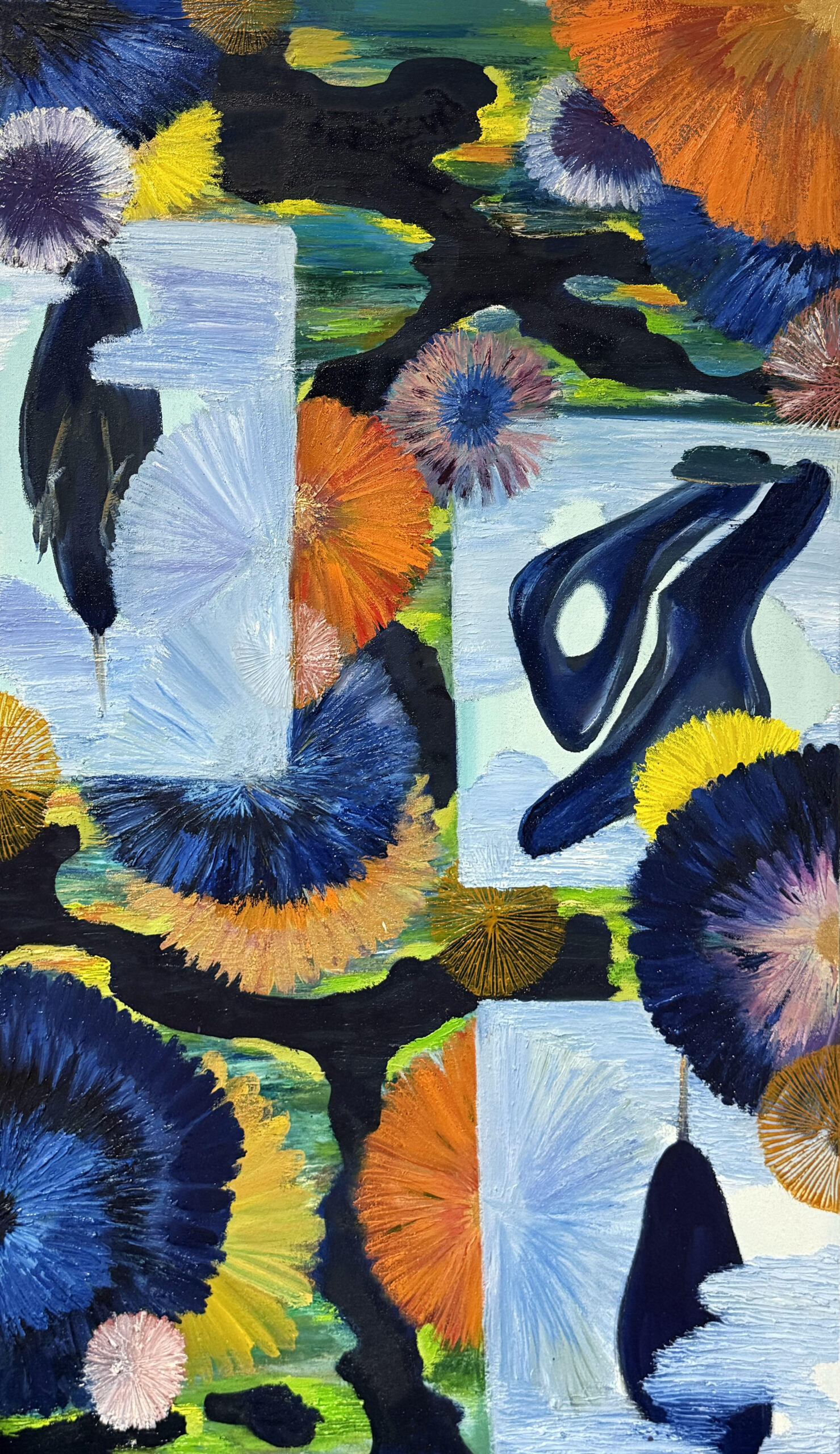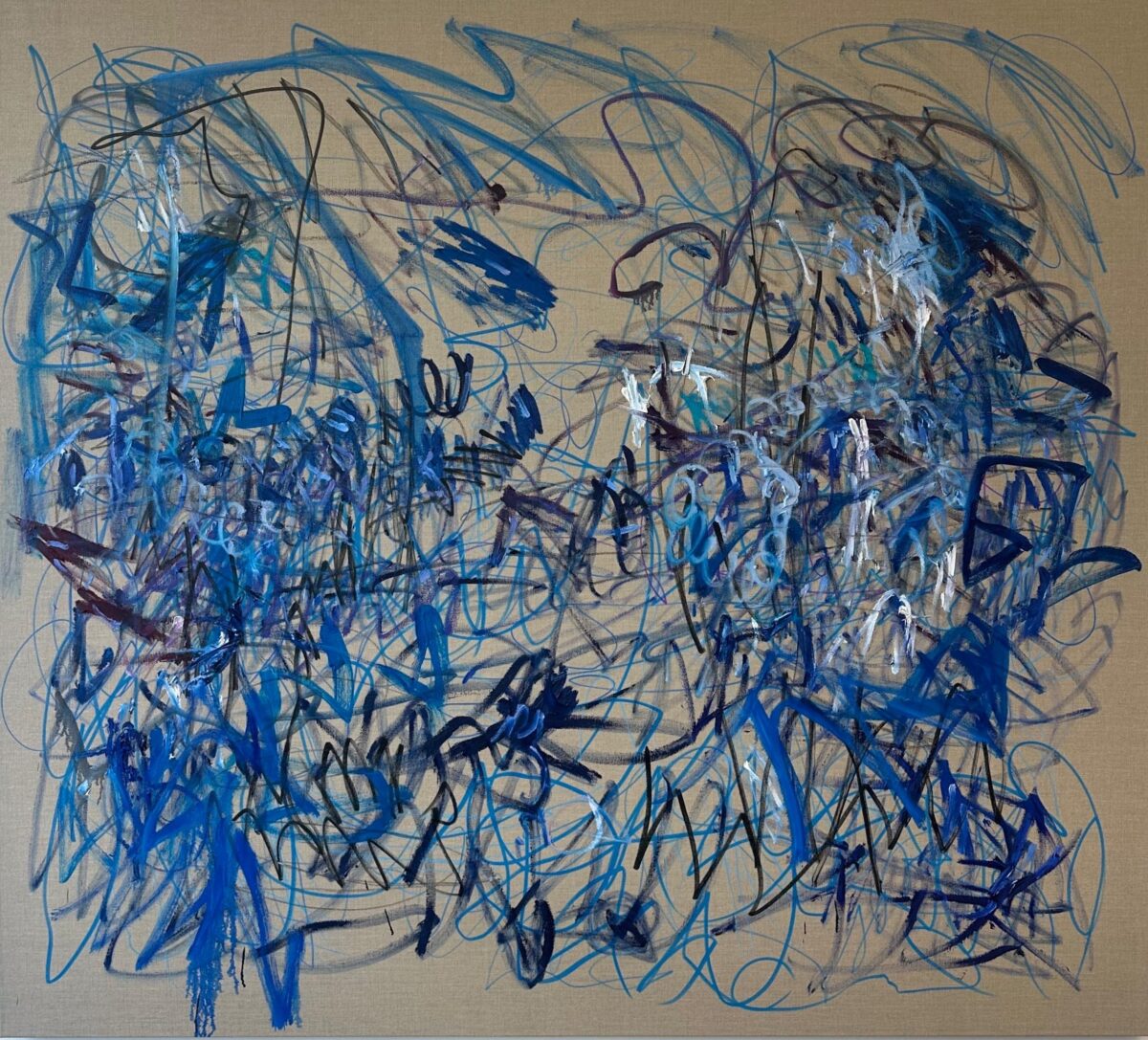Category Art
Published November 5, 2025
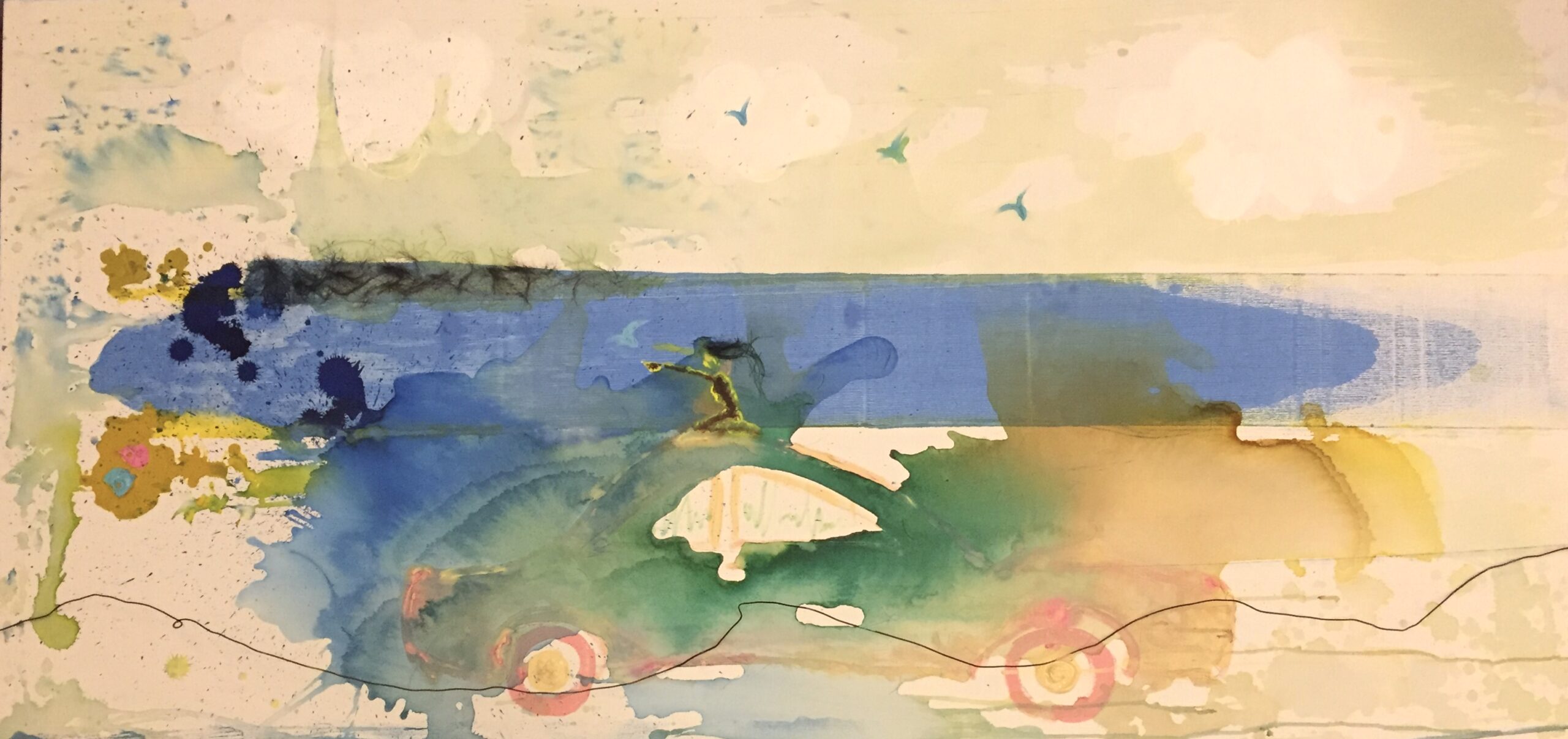
The Tourist, by Vidushi Gupta
Story scent: the smell of “mitti” (मिट्टी, or earth) after rain
Story best enjoyed with a taste of: your first sip of water after a long sleep
Play on repeat while listening to: the sound of wind chimes on a windy day
A glass orb stands on top of two dark, rectangular plinths, prophetic and magisterial. Between the black eco-board boxes, a crush of faintly recognisable Coca-Cola cans—their red logos scratched out and leaking across their metallic silver bodies—appears to be holding the structure aloft. The cans look bloodied, torn and scraped. From a certain distance, the sum of all these parts looks like the spectral figure of a person: a see-through round head, a box-shaped body, a silver belt of cans cinched around the waist.
This is Bridge to Barren, a mixed media installation by the London-based artist Vidushi Gupta, whose practice spans painting, photography, sculpture, film and installation. Exhibited at Unit 2 Gallery in Southend-on-Sea as part of the coastal currents festival in September, and informed by the artist’s recurring fascination with the remnants of capitalism, it examines the soda company’s notorious carbon footprint of water, metal, and single-use objects.
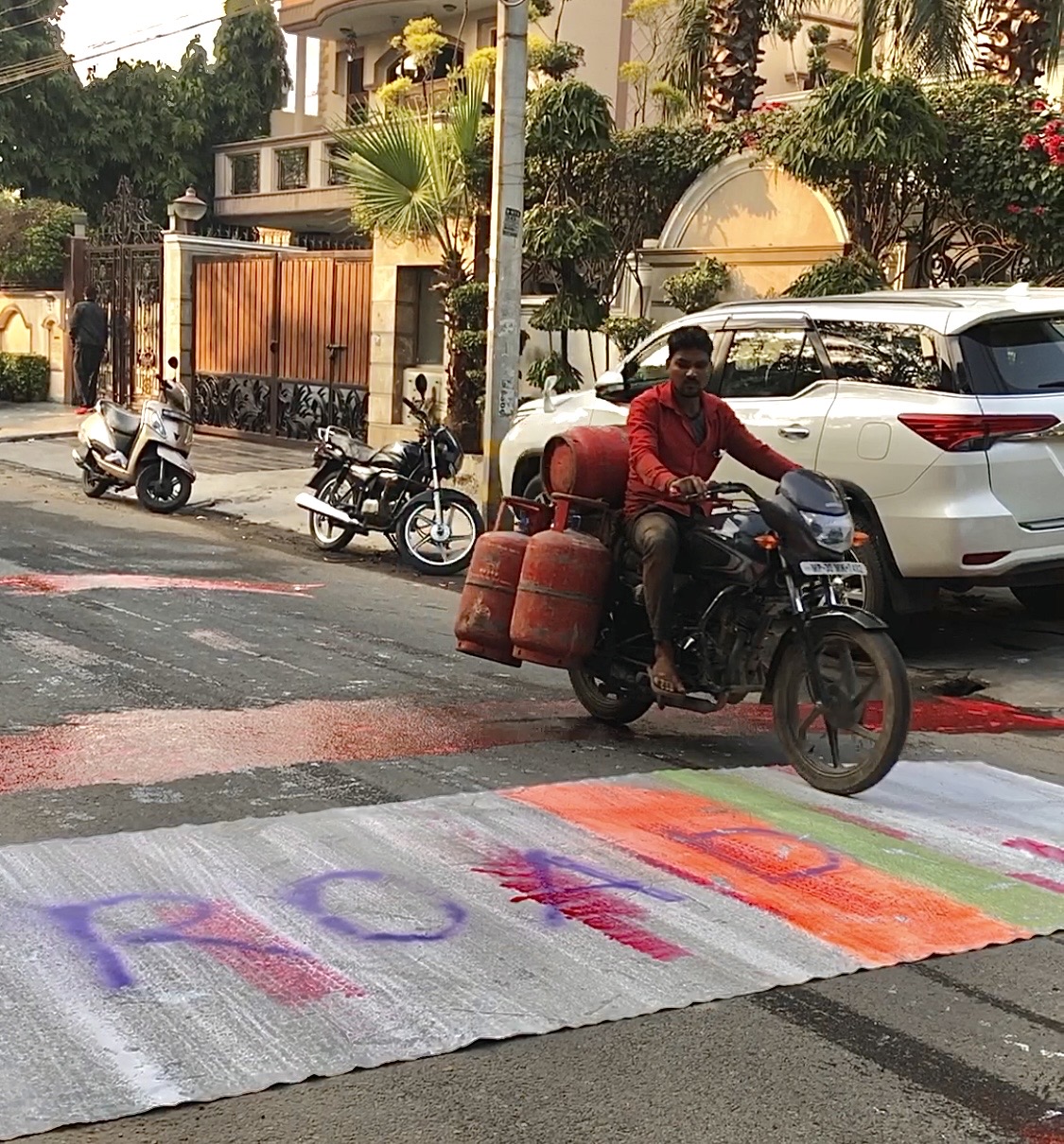
ROAD, by Vidushi Gupta
Vidushi’s work is deeply grounded in phenomenology, ontology and critical reflections on modern-day consumerism. Bridge to Barren was composed by collecting coke cans from the streets of London, sanding off their paint, and pouring their red dust into the transparent orb that dwells atop her installation like a planet. ‘Coca-Cola is a symbol of globalisation,’ she tells me. ‘I wanted to explore what it might be like to erase the brand until it became anonymous, until it transformed into just matter; just colour.’ The effect is that of something both futuristic and fossilised—a crystal ball swirling with aluminium and paint particles, an artefact of our collective contemporary detritus.
A former painter turned multidisciplinary artist, Vidushi’s own creative metamorphosis traces a growing engagement with philosophical inquiry, environmental and political consciousness, and the experiential dimensions of art. Relocating from Delhi to London for art school, first at UAL and then at the Royal College of Art, she began experimenting with new mediums. The pandemic’s isolating onset nudged her practice into new directions, inspired primarily by her forays into ontological philosophy.
Her early works already betray an affinity for the multimodal. The Tourist (2018), a painting made up of ink, acrylics, human hair, homeopathic medicine and copper wire, feels like a prelude of sorts to her 2020 experiential installation, ROAD. In blotted colours that emerge on the canvas like a technicolour Rorschach test, a figure crouched on the roof of a car points a finger west. The vehicle is heading in the opposite direction. A smudge of blue whips past her; green bird figures fly above toward a barely visible distant cityscape. There’s a vertiginous sense of displacement about the entire scene, and a longing for something out of reach.
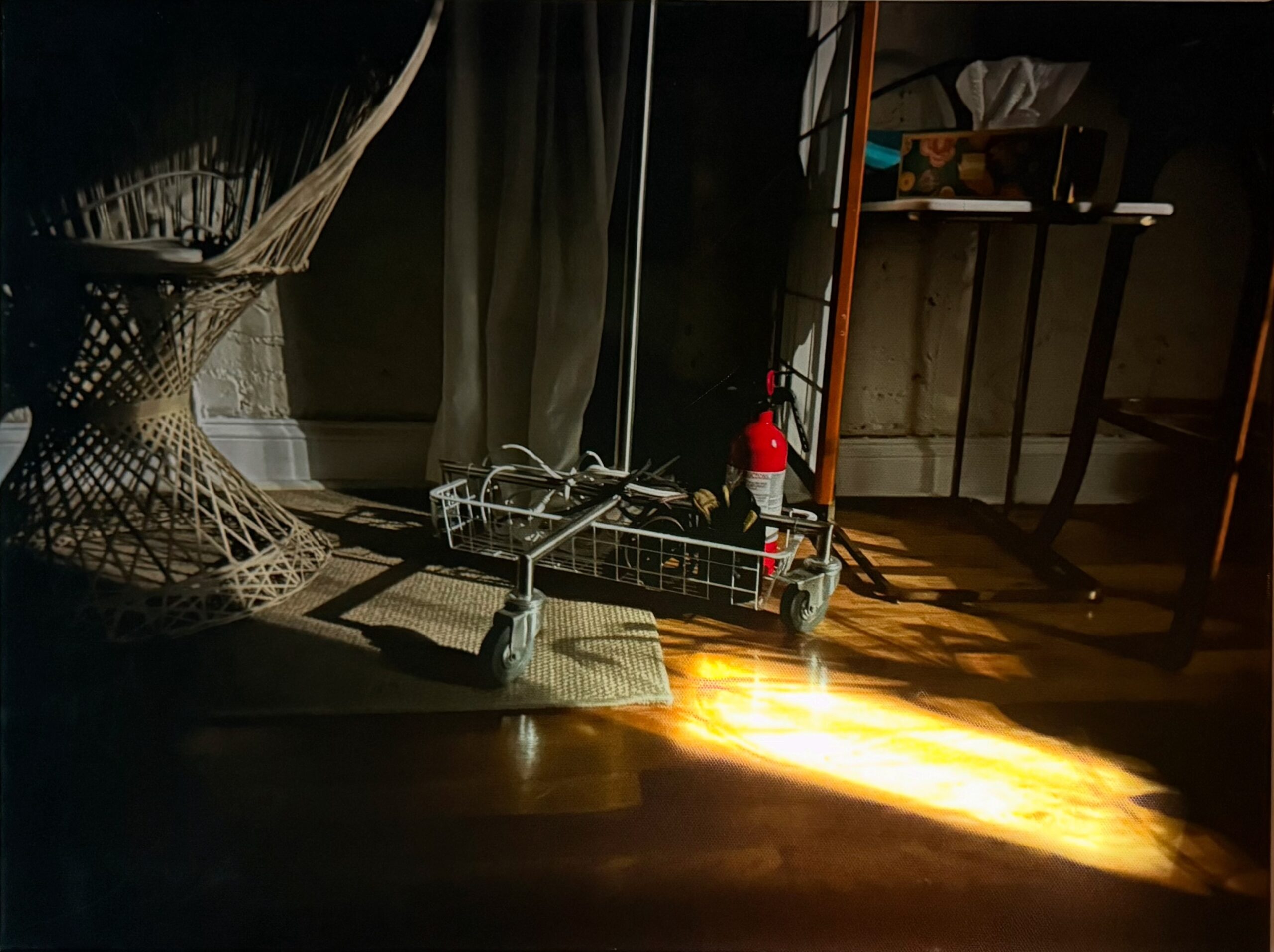
Light Study, by Vidushi Gupta
While sharing the same colours and abstraction, in ROAD, Vidushi’s concerns have broadened from the personal to the collective. In a residential area in India, she spray painted the word “ROAD” on a large unstretched canvas and placed it out on the tarmac, with large swathes of paint around it as a border. She filmed public interactions with the piece, from motorcyclists driving over the paint and staining the canvas to people stopping to stare and walk over, leaving imprints of their shoes. ‘This was a shift in my practice from individual to collective experience,’ she notes. ‘I was inspired by phenomenology to capture the “beingness” of the road, and its relationship with the living and the non- living.’
For Vidushi, our collective ability to notice the details in our surroundings is a dwindling art. Her particular interest in the ruins of the Anthropocene began by paying attention to discarded everyday objects, through observing open garbage dumps in Delhi. In London, she found the waste tidier, hidden behind council bins, but no less emblematic. From tender film works documenting the work of garbage collectors in India (In My Peripheral Vision I See …, 2022) to poignant screen prints of gleaners pocketing useful items from bins (Another Man’s Treasure, 2024), her works transform sites of excess into meditations on waste and want.

Bridge to Barren, by Vidushi Gupta
During a 2023 residency in New York, the artist stretched this emphasis on attention and presence. Her Light Study installation played with an arrangement of photographs she took that capture sunlight mingling with the artificial lights in her room. ‘To notice the things we’re throwing away, we need to be present,’ she observes. ‘I’m guilty of this too. Sometimes, we’re in such a rush that we don’t even notice the moments of art all around us, like sunlight falling on the furniture.’
In a 2024 solo exhibition, she transformed the gallery into a stage for performance and quiet provocation. ‘After reading a book about the story of art without men, I presented my paintings under the name William Clarendon,’ she tells me. ‘I wanted to examine how audiences respond differently to an Indian female artist versus a British male one, and to question what happens when the artist’s presence is removed from the room.’ At the exhibition’s end, every piece was sold. While visitors truly resonated with the art, the experiment also revealed an unsettling irony: the artist’s supposed absence seemed to make him feel more important. In these paintings, the aesthetic and the political converge into a single ontological inquiry: who is seen, and by whom?
Through a sprawling range of different mediums, Vidushi Gupta’s creative practice is anchored by a profound humanism. Her work reminds us that the smallest acts—noticing rays of sunlight; pausing before a pile of waste; feeling the weight of a borrowed name—are never neutral. They are gestures of resistance to a global culture of wanton consumerism and environmental degradation, and an invitation to reshape the future by situating ourselves more wholly, and attentively, in the present.
